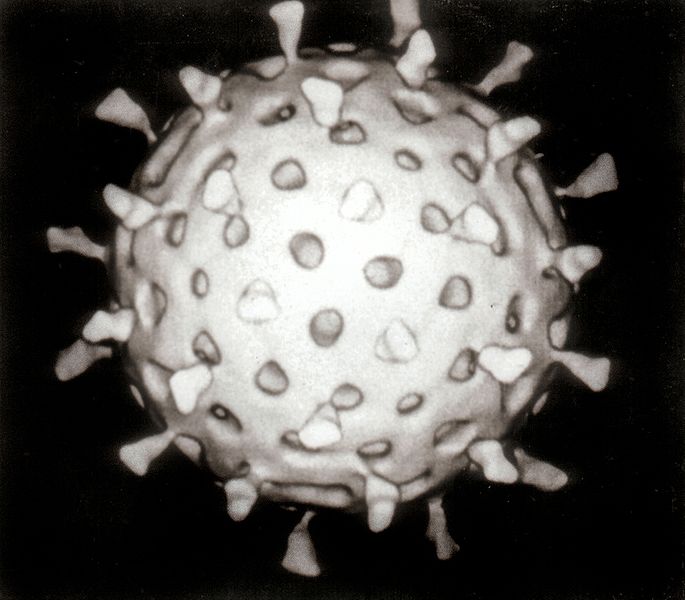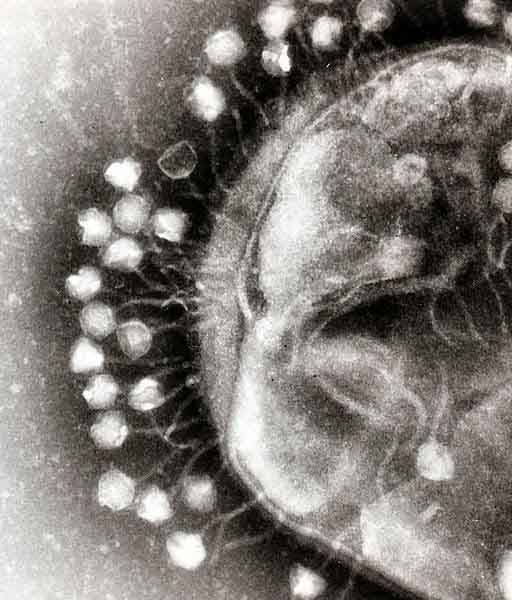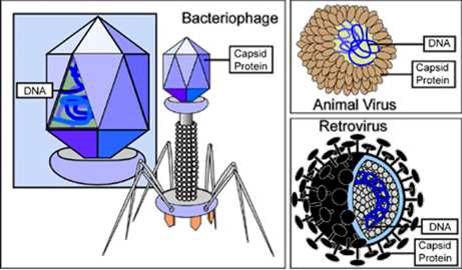 | ||||
What Is a Virus?
Acellular Infectious Particles
Acellular Particles: Viruses
Although they may seem to behave as living things, viruses are actually acellular, nonliving particles. Viruses are not considered to be living organisms because they are incapable of carrying out all life processes.
Article Summary: Viruses are not living cells, but efficient parasites that commandeer living cells and turn them into virus factories. Learn how these nonliving particles act so smart.
Virus 101: Structure, Classification & Reproduction
You have free access to a large collection of materials used in a college-level introductory Cell Biology Course. The Virtual Cell Biology Classroom provides a wide range of free educational resources including Power Point Lectures, Study Guides, Review Questions and Practice Test Questions.
SCIENCE PHOTOS
SPO VIRTUAL CLASSROOMS
 | ||||||
What Are Viruses Made Of?
Viruses are composed of nucleic acid, proteins and, in some cases, lipids as well. Nucleic acid, which can be either DNA or RNA, encodes the genetic information that is necessary to make copies of the virus.
The nucleic acid is surrounded by a protective protein coat, called a capsid. Some viruses are also surrounded by an outer membranous layer, called an envelope, made of lipid and protein.
Capsid Morphology
The viral capsid is a protein coat that provides protection for viral nucleic acid and is a means of attachment to host’s cells. It is composed of proteinaceous subunits called capsomeres. Some capsids are made of single type of capsomere while others include multiple types.
Viral Classification
There are several different ways that virologists (scientists who study viruses) categorize or classify these acellular particles.
Genetic Material: A virus can either have DNA (deoxyribonucleic acid) or RNA (ribonucleic acid) as its genetic material, but never both.
Capsid Structure: Viral capsids come in the following shapes:
- Helical: When capsomeres are bonded together in a spiral shape
- Polyhedral: Capsomeresform an essentially spherical shape comprised of small, flattened plates.
- Complex: Any other different shape that is not polyhedral or helical.
Many bacteriophage viruses on a bacterial cell.
You have free access to a large collection of materials used in a college-level introductory microbiology course. The Virtual Microbiology Classroom provides a wide range of free educational resources including PowerPoint Lectures, Study Guides, Review Questions and Practice Test Questions.
The SPO website is best viewed in Google Chrome,
Microsoft Explorer or Apple Safari.
Page last updated: 8/2015
 | ||||
The factors that distinguish them as nonliving are as follows.
Viruses…
- are not made of cells
- can't reproduce on their own
- do not grow or undergo division
- do not transform energy
- lack machinery for protein synthesis
- are so small that they can only be seen with an electron microscope
Envelope: Viruses can be categorized based on the presence or absence of a membranous envelope surrounding the capsid.
Type of Cells They Attack: Different varieties of virus are very specific with respect to the type of cells that they invade.
Size of Virus: Although all are minute and only visible with the aid of a powerful electron microscope, viruses do come in a range of sizes. For example, the smallpox virus that attacks human cells is up to six times larger than the T4 bacteriophage virus that attacks bacterial cells.
Some Ancient Viruses Were Even Bigger Than Living Cell! Scientists think that modern viruses are smaller, simpler versions of their ancestors!
Learn more in the fascinating RADIOLAB episode "Shrink".








